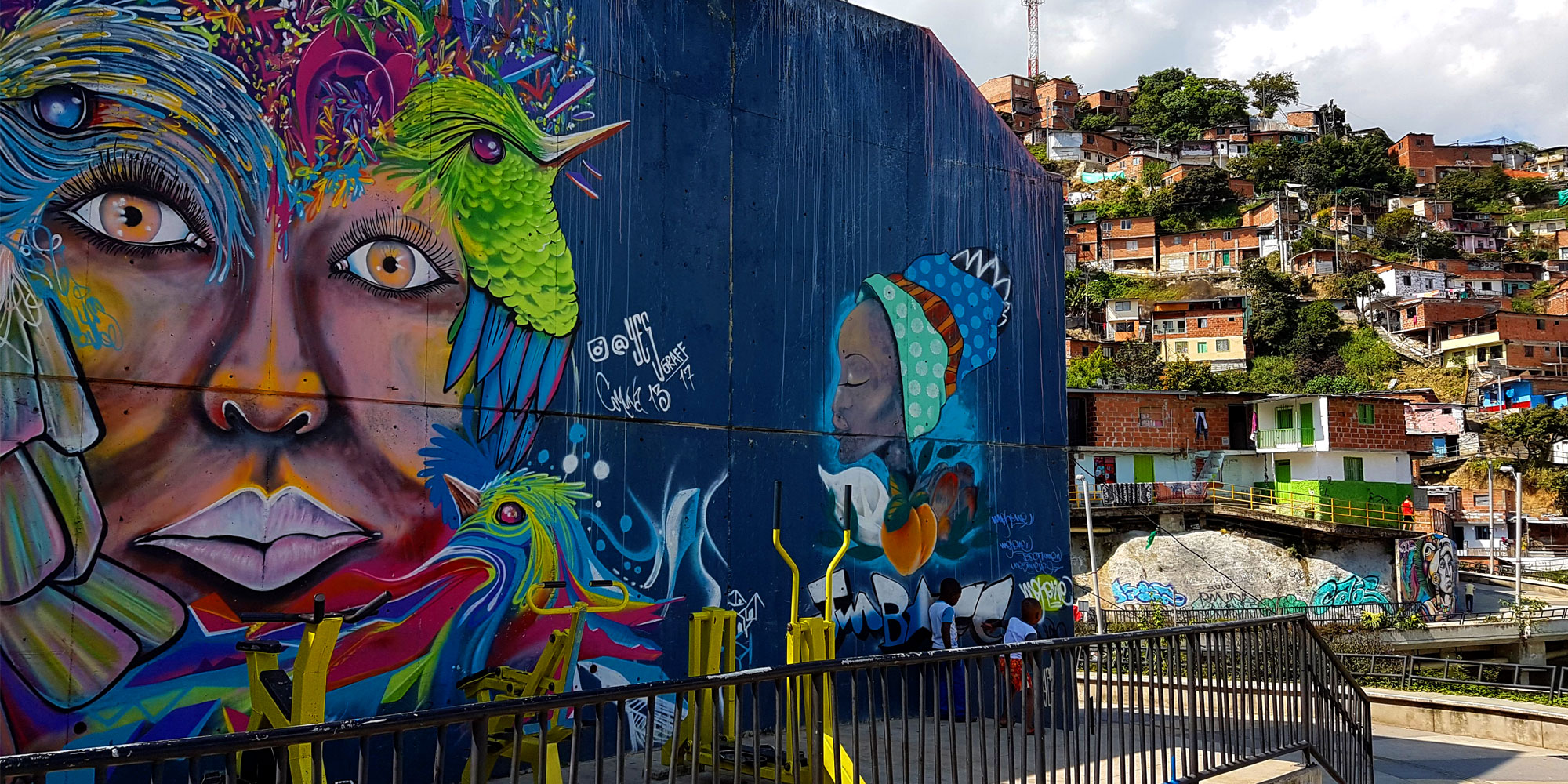

April 18, 2024, 5:41 pm
Fighting through the crowds at popular museums or getting on and off a bus with dozens of other tourists isn’t what today’s travellers yearn for. Today’s travellers want to feel connected to the destinations they visit. They want to speak to locals, learn about their culture and remember the experience for years to come. They want community-based tourism and Colombia is the perfect place to offer it.
a changing colombia
Before you can understand why Colombia is such a prime spot for community-based tourism, you have to understand a little more about Colombia and its tourism industry as a whole. With its tumultuous past firmly behind it, and dramatically improved safety conditions, the tourism industry has been developing and catching up with other popular Latin American destinations such as Peru and Costa Rica.
In fact, Colombia is already seeing a big bump in international visitors. According to Colombia’s Minister of Commerce, Industry and Tourism, the country welcomed 4.5 million non-resident visitors in 2019, that’s a 32.5 per cent increase compared to 2018. Colombia also boasts the #2 spot on the New York Time’s “52 Places to Go in 2018” list and is part of the Condé Nast Traveller list of “the best countries in the world to visit now”.
community-based tourism and colombia
Since the world is only now starting to recognize Colombia as a great spot for a vacation or holiday, the people who visit generally have a more adventurous spirit – despite age demographics. More visitors than ever yearn to enjoy Colombia’s tropical Caribbean beaches, explore the Amazon Jungle, hike through the Andes Mountains Range, see its more than 1,900 bird species or fall in love with the vibrant culture. The tourists coming to Colombia don’t want to be clumped into a massive tour group, they want to experience the country on a more personal level, and that’s where community-based tourism comes into play.

benefits of community-based tourism in colombia
A variety of environmental, economic and socio-cultural benefits are derived from community-based tourism in Colombia.
Environmental
It’s no secret that massive tour operations can be detrimental to ecosystems. Colombia is the second-most biodiverse country in the world, so it already has a lot at stake environmentally speaking. The country is home to the Amazon, deserts, plains, páramo and other unique environments.
When done incorrectly, massive tourism operations can damage Colombia’s environment. When done correctly, however, community-based tourism serves as a way for travellers to protect the ecosystems they are visiting. Tourists can use part of their holiday to plant new vegetation, pick up trash and even care for injured animals. Plus, the money they spend to take part in these experiences can go towards maintaining and preserving natural areas.
Economic
Community-based tourism has a huge economic impact on locals. The minimum wage in Colombia is only about 243 USD a month, or 2,916 USD a year. Moreover, Colombia has the second-most unequal wealth distributions in Latin America, according to the World Bank. The Colombians who reap the benefits of community-based tourism generally are not the ones living in elegant high-rises in the capital of Bogota. They are coffee farmers, indigenous tribesman and women and urban youth.
Since one of the main goals of community-based tourism is facilitating interactions between locals and tourists, the money earned from these programs goes directly towards improving small communities and empowering individuals.
Today, with COVID-19, these small communities need us more than ever as most of them lost their main source of revenue and are struggling to survive.
Sociocultural
Colombia was in the midst of conflict for over 50 years and that had a devastating impact on its people. It’s safe to travel in Colombia now, but the decades of conflict led to locals abandoning culturally significant activities. Today, community-based tourism allows locals to showcase unique cultural aspects of Colombia that couldn’t be highlighted in the last few decades.
One such example is community-based tourism centred on small coffee farms. During the 80s and 90s, many coffee farmers were forced off their land due to violence and couldn’t return for many years. In some cases, their coffee production levels were never the same, but providing small coffee tours for foreigners allowed them to maintain their farms, which are cultural icons in Colombia. In fact, UNESCO named Colombia’s coffee cultural landscape as a World Heritage Site in 2011.

Benefits on the traveller
It’s clear this type of tourism is beneficial to Colombian locals, but it is also has a positive impact on travellers as well. Here are the following benefits from the perspective of the traveller:
• Provides an authentic cultural experience for travellers
• Allows travellers to interact with locals
• Opportunity for travellers to participate in hands-on activities
• Fosters empathy and understanding
• Opportunity for travellers to improve their Spanish (or indigenous language)
• Grants travellers access to areas they could not visit on their own
• Creates more of a lasting connection between the traveller and the trip
• Possibly a less-expensive alternative to big tours
Examples of community-based tourism in Colombia
Fishing Village Tour
Travellers are able to visit a traditional fishing village called La Boquilla near Cartagena in small groups. Local fisherman takes visitors through mangrove forests in canoes while teaching them how to catch fish and crabs. For lunch, guests will stop by a modest home in the fishing village and eat a traditional Caribbean coast meal consisting of the fresh fish caught earlier in the day.
Learn More
Comuna 13 Tour
Comuna 13 was once one of the most dangerous neighbourhoods in Medellin. After a commitment to improvement from the community and government, it is now an exciting destination to see graffiti and learn about the urban culture in Colombia. Local artists proudly display their work, perform for visitors and explain what it took to turn a dangerous neighbourhood around.
Learn More
Coffee Farm Tour
There’s no shortage of coffee farm or plantation tours, but this day tour from Bogota takes small groups to visit four farms in one day. Visitors will learn an exciting part of Colombian culture on each farm while also understanding the whole coffee cultivation process from actual farmers. These coffee farms have been family owned and operated for generations.
Learn More

Flower Farm Tour
The area around Medellin is known for cultivating flowers for export and for the famous Flower Festival that takes place every year in the city. Travellers are able to visit a small flower farm run by a husband and wife team who teach the whole flower cultivation process as well as how to arrange blooms in the traditional fashion. Visitors will see how locals prepare the flowers for the festival and eat traditional snacks.
Learn More
the bottom line
Community-based tourism puts locals in charge of their own stories and their own future. Simultaneously, it allows travellers to take part in unique aspects of Colombia’s culture, history and nature while forming lasting relationships and deeper connection with locals.
about uncover colombia
Uncover Colombia is a small tour company offering unique culture and nature experiences in Colombia since 2012. After witnessing Colombia’s transformation from a country with a tumultuous past into a place of great beauty and growing stability, a group of Colombian friends wanted to show foreigners all this country has to offer. Uncover Colombia provides day tours, multi-day tours and birding tours throughout the country with English-speaking guides. Community empowerment, sustainability and responsible travel are key pillars of the organization.
Learn more about Uncover Colombia or reach out to contact us.
Share with your traveller friends!




